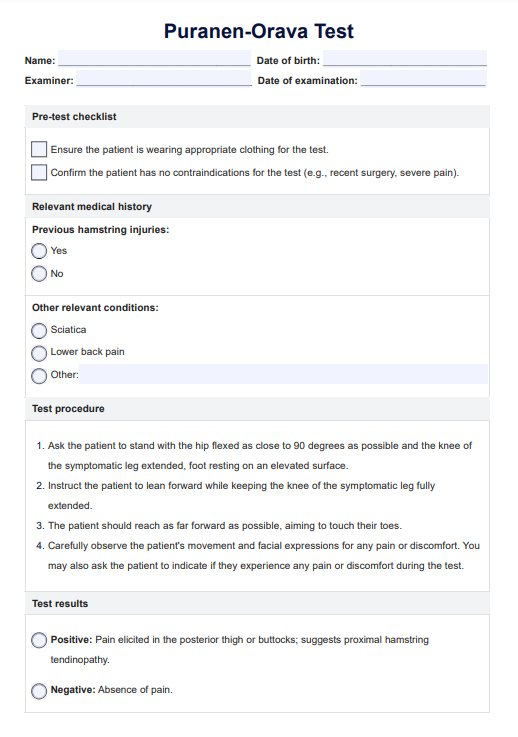The Puranen-Orava Test diagnoses proximal hamstring tendinopathy by eliciting posterior thigh pain or buttocks pain.

Puranen-Orava Test
Whether you're a beginner or an expert, this guide will help you master the Puranen-Orava Test and achieve your goals.
Use Template
Puranen-Orava Test Template
Commonly asked questions
To test for proximal hamstring tendinopathy, healthcare professionals use three pain provocation tests: the Puranen-Orava Test, the Bent Knee Stretch Test, and palpation of the hamstring tendon.
Chronic hamstring tendinopathy can be managed effectively with a combination of rest, physical therapy, and other non-invasive treatments, but complete recovery may take time and depend on adherence to the treatment plan. There are also surgical options for it.
EHR and practice management software
Get started for free
*No credit card required
Free
$0/usd
Unlimited clients
Telehealth
1GB of storage
Client portal text
Automated billing and online payments











